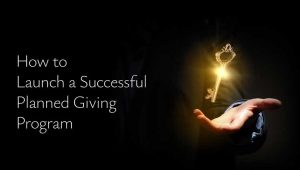
How to Designate a Beneficiary for a Life Insurance Policy
Learn how to designate a beneficiary for a life insurance policy to ensure your loved ones receive the financial support they need promptly and efficiently.
Home » Archives for Viken Mikaelian » Page 4
CATEGORY

Learn how to designate a beneficiary for a life insurance policy to ensure your loved ones receive the financial support they need promptly and efficiently.

Explore the differences between revocable and irrevocable trusts for your estate planning needs.

Some nonprofits are exploring expensive analytics platforms for planned giving—complete with dashboards, donor heatmaps, and predictive scoring tools—”intelligence tools” as they are called. Often, these are rebranded business intelligence tools that have been given a “legacy twist” and called innovation. But here’s the question: Is this the right tool for organizations like yours? These platforms can generate meaningful insights… if you have 2,000,000+ prospects to analyze. But when your donor file has less than 100,000 people, do you need predictive algorithms to tell you who cares about your mission?

Discover the crucial differences between a last will and a living will to ensure your medical and financial wishes are honored.

Master your elevator pitches. You have eight seconds to make an impression—are you ready? Whether it’s a reunion, a luncheon, or a chance encounter, your ability to start a meaningful conversation about legacy giving matters. This guide offers 25 ultra-brief, donor-specific elevator pitches you can memorize and use anywhere. Organized by giving vehicle and donor motivation, each one is crafted to spark curiosity and open the door to deeper discussion.

Through legacy gifts, donors like Angela and Terrell Richards and Hilda and Arnulfo Miramontes are transforming lives at St. Jude Children’s Research Hospital. Their stories show how planned giving—through wills, trusts, and heartfelt commitments—ensures children battling catastrophic illnesses receive lifesaving care, free of charge. This article honors their legacies and invites readers to consider their own. Because leaving a legacy isn’t about wealth—it’s about impact, compassion, and giving children a future worth fighting for.

Trendy fundraising tactics come and go—usually with little to show for it. The nonprofits that win big gifts and long-term loyalty understand one thing: donors are deciding if you’re worthy of their legacy. This article pulls no punches. It’s a call to abandon gimmicks and build something lasting. If you’re serious about donor trust, planned giving, long-range impact—and your career—this isn’t just another blog post. It’s your wake-up call.

What Is Planned Giving and Why Does It Matter? Planned giving, also known as legacy giving, is the art of securing future gifts from donors through their estate plans. These gifts are often the largest and most impactful contributions a donor will ever make—with the average planned gift ranging from 200-300 times larger than a typical annual donation. Consider how a small environmental nonprofit transformed its future with just three bequests in its first year of planned giving: these gifts

A bad blog doesn’t just look lazy—it proves it. In the world of planned giving, where trust and credibility matter most, an outdated or lifeless blog can quietly sabotage donor confidence. Learn why showing up halfheartedly online is worse than not showing up at all—and how to fix it before it costs you.

Understanding the key differences between conservatorship and guardianship is crucial for the future care of loved ones.